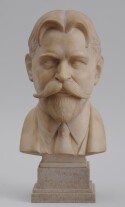|
|
|
The Gerald Kornblau Collection at Stair Galleries
March 10 & 11, 2012
Gerald Kornblau, a pioneer dealer in American folk art, was born in New York City on August 12, 1928 to Sam and Sadie Kornblau. His interest in photography began when he was still in high school. While serving in the US Army during the Korean Conflict, Kornblau was assigned what he regarded as the unpleasant task of taking photographs. Some of his pictures were used to illustrate a National Geographic article in May 1953 entitled “The GIs and the Kids of Korea.” Little did he know that this project would change his perceptions and lead to the development of a life-long love affair with photography, reflected in the large collection of American “vernacular” photographs he assembled over the years. Approximately 100 of these wonderful glimpses into America’s past are being offered at the Stair auction of Kornblau’s collection on March 10th and 11th.
Kornblau opened a gallery in Manhattan in the late 1950s and quickly developed a reputation for carrying distinctive, rare and unusual examples of American folk art at a time when interest in American naïve painting and sculpture, material culture and vernacular crafts was starting to burgeon. Museums hosting exhibitions on American folk art invariably included an example that originated with Gerald Kornblau. At the Winter Antiques Show, the very best examples of American folk art were always to be found in Kornblau’s booth. At the 1975 show, Kornblau proudly débuted the c.1812-1813 portraits of Ashbel and Patience Stoddard, residents of Hudson, NY, attributed to Ammi Phillips.
 |
| |
Kornblau had a great passion for nineteenth-century American cast-iron decorative and functional objects and for copper weather vanes. His interest in the latter inspired him to reprint the 1875 catalog of weather vanes and finials manufactured by J. W. Fiske. He also gathered a group of fine art, including a marble bust of Douglas Alexander, president of the Singer Sewing Machine Company, executed by Paul Manship ca. 1942 – 1945. This bust appears on page 157 of John Manship’s book about his father.
He sold folk art objects to the Newark Museum in Newark, New Jersey, and to the Museum of American Folk Art in New York City. He also assisted a number of noted collectors with the formation of their collections, including Alice Kaplan, Jeremy L. Banta and Barry Cohen, who “with limited funds managed to amass a collection of the finest material by buying one good piece and trading it up for another, better object,'' Kornblau said.
Kornblau was not only a successful dealer but also a highly respected authority on American folk art. When the significant Fred Wichmann Collection of Pennsylvania German frakturs and other decorative art were consigned to Sotheby’s for auction, Mr. Kornblau was asked to catalog the collection.
Colin Stair, owner of Stair Galleries in Hudson, New York, fondly remembers Kornblau, whose house in Claverack was located next to the Stair Restoration workshops. A large cast-iron dog figure made by the Mott Iron Works stood in Kornblau’s yard for many years. Stair’s introduction to Kornblau was initiated when the figure toppled over and he alerted his neighbor about the fallen canine. A friendship ensued that lasted for more than ten years before Kornblau died. According to Stair, Kornblau was a font of information and he gladly shared his expertise with anyone who shared his passion for folk art.
The catalogue for this important sale will be posted to the Stair website on February 24th coinciding with the opening of the preview in the gallery at 549 Warren Street, Hudson, NY.
|